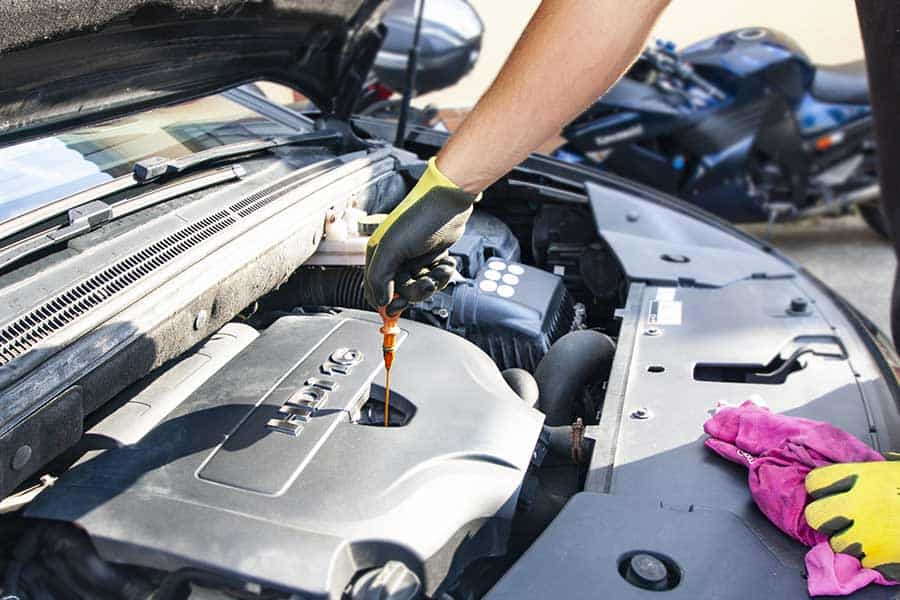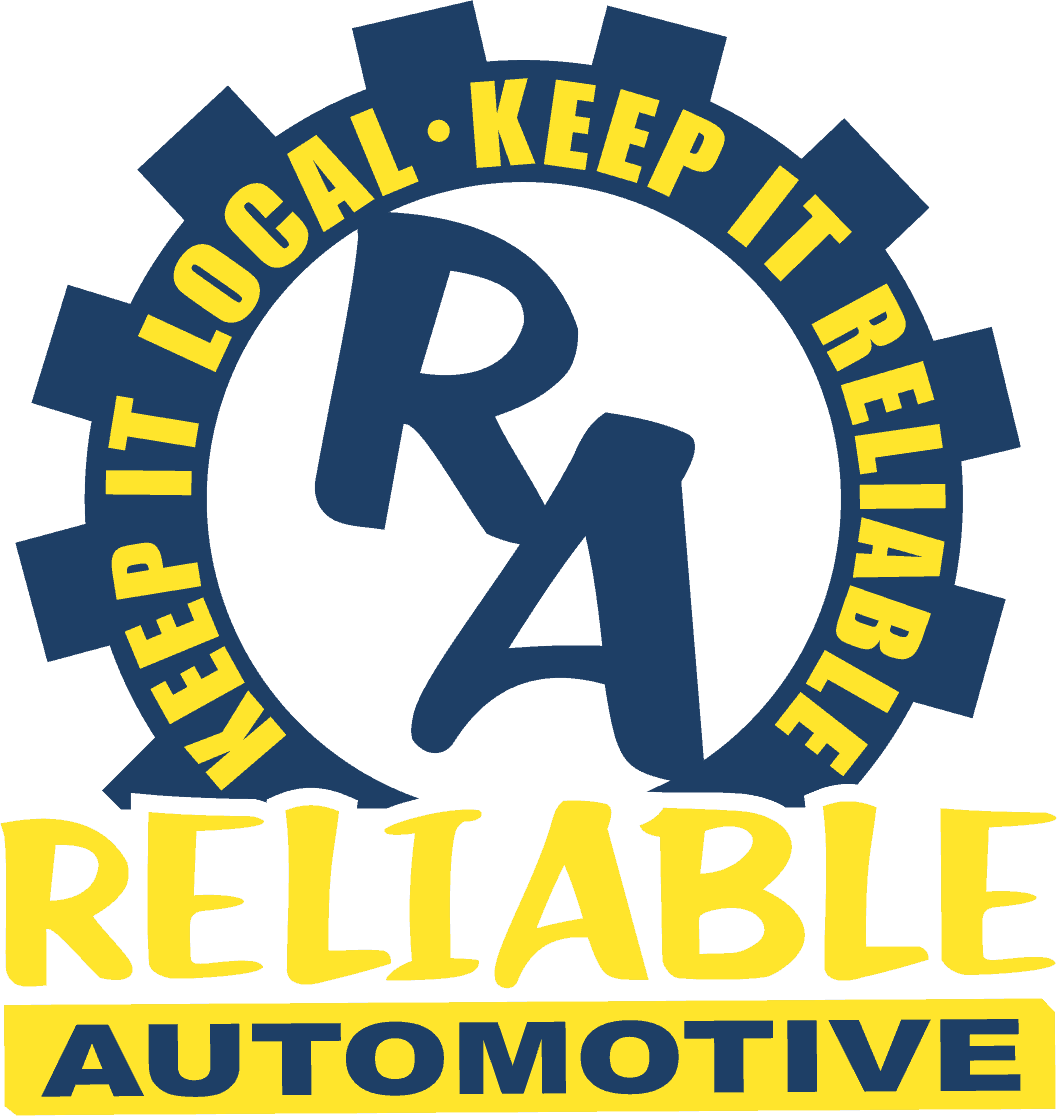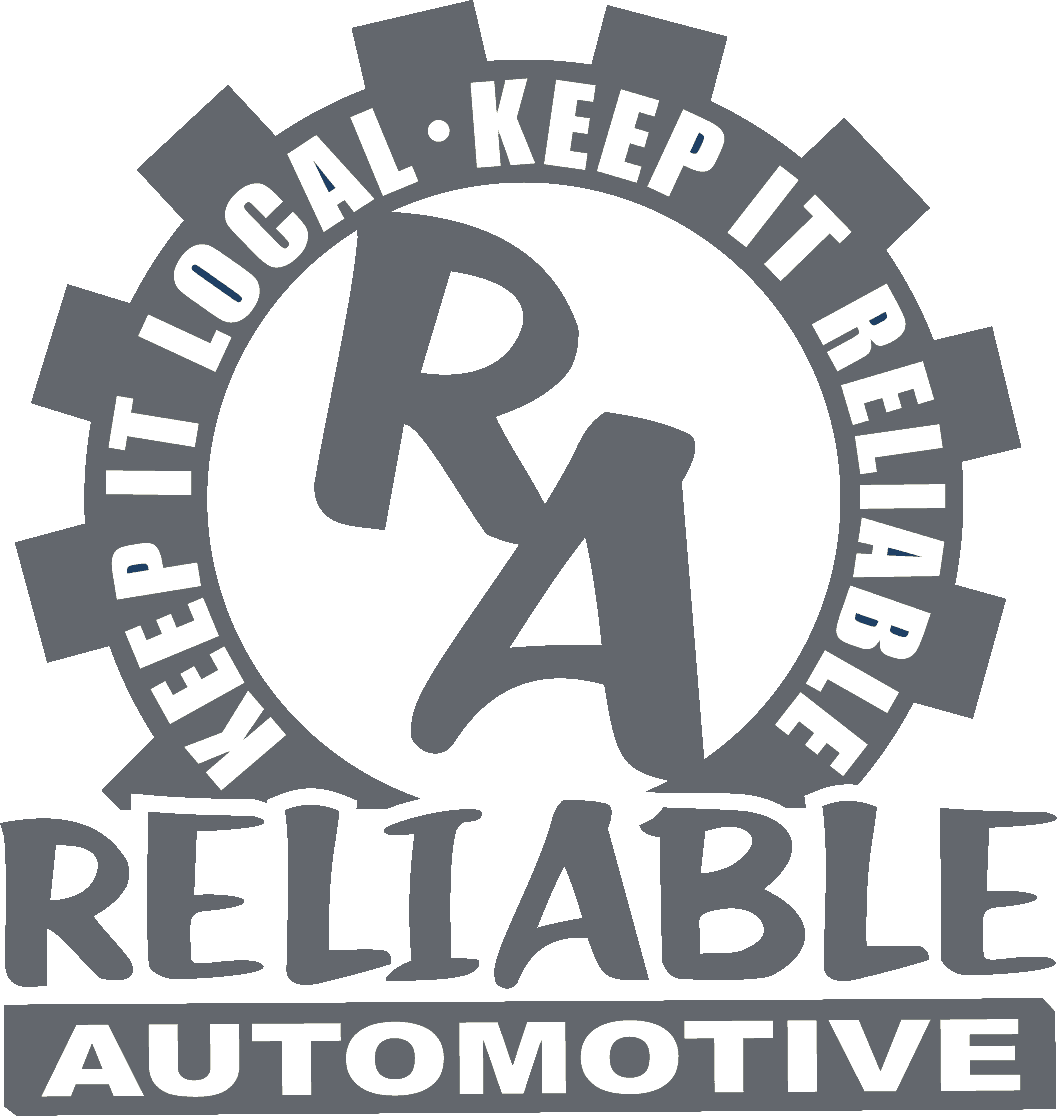
To keep your vehicle running at its best for as long as possible, you have to keep up with its recommended preventative maintenance routine. This includes bringing it in for routine oil change service.
This service is the easiest and most affordable way to help ensure that your vehicle runs optimally. A professional oil change will optimize the performance of your engine and help extend the lifespan of your vehicle.
In most cases, engine failure is actually caused by neglecting to properly maintain it. So, put simply, keeping up with a regular oil change routine will save your engine.
In this guide, we’ve got everything you need to know about professional oil change service: the benefits, how often it should be done, what exactly happens during the oil change, and more.
The Benefits of Making Oil Change Service Part of Your Routine
Other than knowing that they need to be done at some point, most drivers don’t give much thought to oil changes. But some very important benefits come from ensuring your engine has good, clean oil running through it. These benefits include the following.
Oil Changes Reducing Excess Friction & Wear
Metal grinding on metal is never a good thing in a vehicle’s engine. But once the oil and filter get old and dirty, that’s exactly what can happen. Clean oil keeps all of the delicate engine components properly lubricated. On the other hand, old, dirty oil cannot provide effective lubrication, and eventually, the components can begin to wear directly together. This can end up causing your engine to totally seize up. Your vehicle will be undrivable if that happens and will need to be towed to the closest auto shop for significant engine repair.
An Oil Change Ensuring the Engine Stays Clean
Your engine is the main part of your vehicle that needs to be kept clean. And that is another one of the important things that clean oil does. The oil works to trap grime, dirt, and other contaminants as it cycles through your engine. But the oil can only absorb so much. If the oil is not changed periodically, all that gunk will clog the oil filter and lead to serious engine damage.
It is important to note that the existing oil shouldn’t just be topped off every time it gets low, without being changed regularly per recommendations. Diluted oil will still not be able to keep an engine properly clean and protected.
Clean Oil Absorbing Excess Heat in the Engine
With so many metal parts moving around, your engine generates a significant amount of heat as it runs. Without the proper protection, the engine can quickly overheat. Clean oil effectively absorbs any excess heat that builds up to prevent this from happening. But overly dirty oil will not be able to sufficiently protect the engine from overheating. It can even start to reflect the heat, creating an even bigger problem for the sensitive engine components.
Engine Oil Minimizing Rust and Corrosion Inside the Engine
Two of the most destructive things for a vehicle’s metal engine parts are rust and corrosion. That is why another important task that motor oil performs is to prevent these things from building up inside the engine. Having routine oil changes done will help ensure that the oil can continue to keep these contaminants at bay.
Routine Oil Changes Optimize Your Car’s Fuel Efficiency
Clean oil helps maximize your vehicle’s fuel efficiency. When the engine can run smoothly without excess heat and friction, it doesn’t have to work as hard and use as much fuel. Dirty engine oil and a dirty filter puts excess stress on your engine and will significantly lower fuel efficiency.
Providing the Opportunity for Any Other Vehicle Issues to be Identified
While your vehicle is in for an oil change service, the mechanic will also do an inspection and look for any other issues that may be present. This prevents small things from turning into big problems down the road, saving you money on more serious repairs. You can trust our ASE-certified mechanics here at Reliable Automotive to not only perform the best oil change in Hays County but also perform a thorough multi-point vehicle inspection every time.
How Often Should You Have an Oil Change Service Done?
One of the most common questions about oil change service is how often it should be done. There is no all-encompassing answer to this question. What the best oil change schedule is for a vehicle is impacted by a variety of factors.
But there are a few general guidelines to give you an idea:
- Conventional motor oil should be changed every 3,000 miles.
- Synthetic blend motor oil should be changed every 5,000 miles.
- Full-synthetic oil should be changed between every 5,000 and 7,500 miles.
- The oil should be changed more frequently as the mileage increases and the vehicle ages.
- If you are frequently driving in stop-and-go traffic or carrying/towing heavy loads, the oil will need to be changed more often.
- If the engine is burning oil and/or routinely generating smoke, the oil should be changed more frequently.
For a specific answer on the frequency of oil changes for your vehicle, your owner’s manual is the best place to look. The expert mechanics here at Reliable Automotive can also help you determine what the best oil change routine is for your vehicle.
Don’t forget to check our latest oil change coupons! We want to help make keeping up with your vehicle’s preventative maintenance as easy as possible.
What Happens During a Professional Oil Change, Exactly?
DIY oil changes can be tempting. But, even though the task seems simple, doing an oil change properly is a more in-depth service than you may realize and is something that should be entrusted to professionals.
During a full-service oil change at a professional auto repair shop, such as Reliable Automotive, your mechanic will:
- Drain all of the old, dirty oil
- Remove the old oil filter and install a new, clean filter
- Refill the engine with fresh, new oil
- Lubricate high-wear areas, including the chassis, hood, and door hinges
- Inspect the vehicle’s other system fluids, such as the brake, transmission, and power steering fluid
- Top off the coolant and windshield washer fluid as needed
- Check the tire pressure, belts, hoses, battery, wiper blades, and lights
- Inspect the in-cabin air filter and engine air filter
There is a lot that happens during a professional oil change service to help ensure your vehicle continues to run reliably and safely.
Warning Signs to Know When an Oil Change Is Needed
There are several red flags to be aware of that indicate it is time for your car to get an oil change, including:
- Your oil light or “Check Engine” light is illuminated
- The dipstick is indicating a low oil level
- The oil is much darker than normal
- There are metal flecks in the oil on the dipstick
- Reduced engine performance
- Loud and unusual engine noises
If any of the above is happening, bring your vehicle to your closest Reliable Automotive location for an inspection and synthetic oil change service.
How to Check Your Own Oil (Properly)
One extremely beneficial thing to know is how to properly check the engine oil in your car. This will help you keep your engine running at its best between oil change appointments. Here’s a quick breakdown of checking your oil:
- Make sure the vehicle is parked on level ground and the ignition is off.
- Lift the hood and locate the oil dipstick. It usually has an orange or yellow ring handle that is marked with a symbol of an oil can.
- Remove the dipstick from the tube and use a rag or paper towel to wipe the oil off.
- Fully reinsert the dipstick back into the tube.
- Slowly pull it back out and check the oil level compared to the markings on the stick, which will usually be two lines or say “Safe,” “Add,” and “Low.”
- If the dipstick indicates a low oil level, add a quart of the proper oil just until you can get your vehicle to the shop ASAP. Don’t ignore low oil levels!
*Check your owner’s manual for more specific information for your vehicle.
What Are the Different Types of Oil for Cars?
There are several different types of engine oil available to meet the needs of a variety of different types of vehicles, driving habits, and mileage.
But first, there are two important factors that apply to all types of oil: viscosity and weight.
- The viscosity denotes how fluid the oil is. Higher-viscosity oils are thicker and pour more slowly at low temperatures, while low-viscosity oils are thinner and pour more quickly. The Society for Automotive Engineers (SAE) is who assigns a viscosity rating to all oils, and you’ll usually find the rating printed on the bottle’s label.
- The weight is another number given by the SAE and describes the viscosity of the oil. This number is allocated to the oil based on how freely it flows at 210°F, which is roughly the operating temperature for most vehicle engines.
Now, here’s a quick breakdown of the different types of engine oil.
Conventional Oil
Conventional motor oil is what would be considered “regular” or “standard” oil. Made from crude mineral oil, it is only partially refined, which makes it less expensive than other types of engine oil. Even though it does get dirty more quickly, conventional oil can still provide adequate protection for most standard engines.
An oil change will be needed more frequently when using conventional oil. But, as long as it is changed on a regular schedule, this oil is still capable of helping your engine get to 150,000 miles or more.
Full-Synthetic Oil
Full-synthetic oil is entirely manufactured in a specialized lab or factory and is extremely refined. So, this oil withstands high engine temperatures better and breaks down at a slower rate than conventional oil. Though it does cost more than other types of engine oil, full-synthetic oil offers the highest level of performance and engine protection. Most of today’s vehicle manufacturers recommend using full-synthetic oil.
Synthetic Blend Oil
Synthetic blend oil is a good choice for drivers who can’t (or don’t want to) pay the higher price of full-synthetic oil. This oil combines the best features of both conventional and full-synthetic oil.
About 45% of all vehicles on the road today are using either a full-synthetic or synthetic blend oil.
If you are wondering which is the best option, you need to consider a few things:
- Synthetic blend will still contain some mineral oil, so its performance will be dependent on exactly how much mineral oil is used. The higher the concentration of mineral oil, the lower the oil’s performance will be and the shorter its longevity. But synthetic blend oil will be cheaper and will only need to be changed slightly more often than full-synthetic oil.
- Full-synthetic oil performs better at both high and low temperatures and has a better viscosity, which will help further extend the life of your engine. It also more effectively resists thermal breakdown, oxidation, and oil sludge buildup. It will be the most expensive type of oil but will need to be changed the least frequently.
High-Mileage Oil
High-mileage oil was made to provide the extra protection that older engines with more than 75,000 miles need. This oil prevents issues that many older vehicles face, including higher oil burn-off, engine corrosion, and leaking gaskets. High-mileage oil utilizes viscosity modifiers, special cleaners, anti-corrosion agents, and seal conditioners.
Diesel Oil
Diesel engines are usually larger and dirtier than gasoline engines, so diesel motor oil is designed to use special additives to sufficiently keep these engines clean and protected. Because this oil absorbs a large amount of debris and dirt, a diesel engine will need more frequent oil change service.
There is no universal answer to which oil should be running through an engine. The best answer is to use the type that is called for by your vehicle manufacturer. Usually, a range of different oils will be recommended to take into account different driving habits and environments. And there is no harm in switching between synthetic and conventional oil in your vehicle.
If you are having trouble determining which type of engine oil should be used in your vehicle, just ask your Reliable Automotive oil change specialist for their professional advice.
Are All Oil Filters the Same?
No, not all oil filters are the same. The ability of the oil to keep the engine clean and protected is strongly influenced by the oil filter. If the filter is old and/or extremely dirty, it won’t be able to sufficiently do its job, and the oil flowing through it will not be cleaned, or it may not be able to pass through at all. In either case, the engine will suffer.
Here is a quick breakdown of the different types of oil filters.
Full-Flow Oil Filter
Also referred to as a primary filter, this one is the most commonly used oil filter. Unlike some filters, this filter cleans 100% of the oil flowing through the engine. A full-flow filter is especially good in cold climates, because it allows the oil to move freely through the engine, no matter how cold it is outside.
Cartridge Oil Filter
Essentially the same type of filter as a full-flow filter, a cartridge filter is just made from recyclable material.
Spin-on Filter
A spin-on filter is another type of full-flow filter; it has a steel canister paired with a paper element and is easy to use, requiring minimal tools.
Secondary Oil Filter
Exactly as the name implies, a secondary filter serves as a backup for the primary filter by removing any contaminants missed by the primary filter.
Spinner Oil Filter
A spinner filter is another type of secondary filter. These use centrifugal force, sometimes over 2,000x greater than gravity, to trap contaminants. This force enables the filter to catch and absorb even the smallest contaminants. A spinner filter is extremely effective but usually more expensive than the other types of filters.
Magnetic Oil Filter
Another type of secondary filter, a magnetic filter utilizes magnetic force to remove metallic bits from the engine oil. But it will not remove much dirt and grime. Magnetic filters don’t need to be changed like other filters and simply need to be cleaned periodically.
Routine Oil Change Service Will Ensure Your Engine Stays Protected
The easiest and most effective investment you can make to ensure your engine continues to run at its best is to keep up with routine oil change services. Not doing it can lead to overly worn engine components, overheating, and even a seized-up engine.
Our ASE-certified mechanics here at Reliable Automotive can help keep your engine sufficiently protected. We strive to always provide high-quality service and expert auto care at reasonable prices. Make sure to check our Coupons page for the latest synthetic oil change coupons and other service deals to help make your visit as affordable as possible!
The expert service staff here at Reliable Automotive is here to meet all of the auto service needs of Hays County drivers, from routine maintenance to in-depth repair and everything in between!






